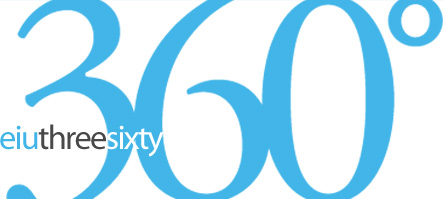Flipping through Blue Room Magazine’s first edition, you probably wouldn’t guess it’s entirely student produced and its editor in chief had zero previous experience. Professionally done from its physical construction to the actual content, Jamie Olson’s brainchild is remarkably close to flawless.
Regardless of how unlikely those circumstances may seem, they’re no exaggeration.
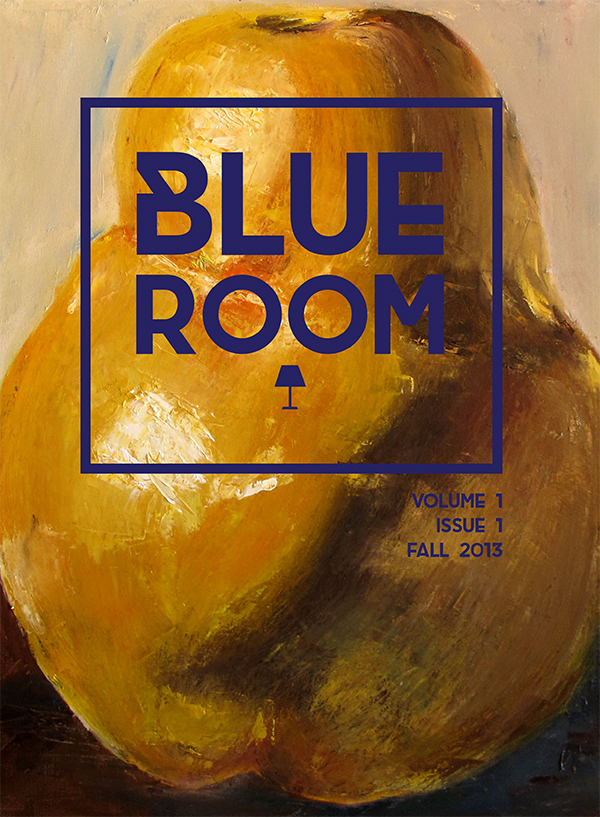 |
| The front cover of the Fall 2013 edition Blue Room. |
In fact, the 15 or so students who worked with Olson to produce this biannual Department of Art publication had no inkling they’d be participating in the project when the Fall 2013 semester began. Before Christmas break, though, they were finished binding the 86 glossy pages of Blue Room’s maiden printing and looking forward to perfecting the process this spring.
If you want a copy of the Spring 2014 edition, which will again contain visual and written features on art department students and faculty, you have until the end of March to get your order in. You can also email blueroommag@eiu.edu if you’re interested in sponsoring or donating to the magazine.
Getting Off the Ground
Olson, a junior graphic design major, says the idea for an art department magazine came to her when she was approached to provide cover art for the philosophy department’s biannual student journal.
“It seemed silly that the art department didn’t have that kind of publication showing its students’ work,” remembers Olson. “We have designers. We have all kinds of equipment available to us.”
Ideas flooded Olson’s head, but she quickly realized these ideas would require significant assistance to carry out.
Early in the fall semester, she pitched the magazine idea to friends and fellow members of the Art Association registered student organization. Met with enthusiastic response, the project quickly took shape with weekly meetings and three simple ambitions: To showcase EIU students’ artwork, to publish interviews with students and faculty representing each area of the art department, and to make fellow artists aware of various opportunities to exhibit their work at Eastern.
“We also felt like the art department is really separated from the rest of campus,” added Olson. “A lot of people don’t really know what lies in Doudna. It’s nice to walk through to get to your classes, but a lot of people don’t really know what happens in that building.
“We wanted a way to connect the art department with the rest of campus and show everyone else what happens inside the building.”
There was no money to get the project off the ground, and Olson’s ambition is to keep it self-sustaining. Customers pre-ordered and paid up front to cover printing costs, and the business model was successful enough that there was no reason to change it this time around.
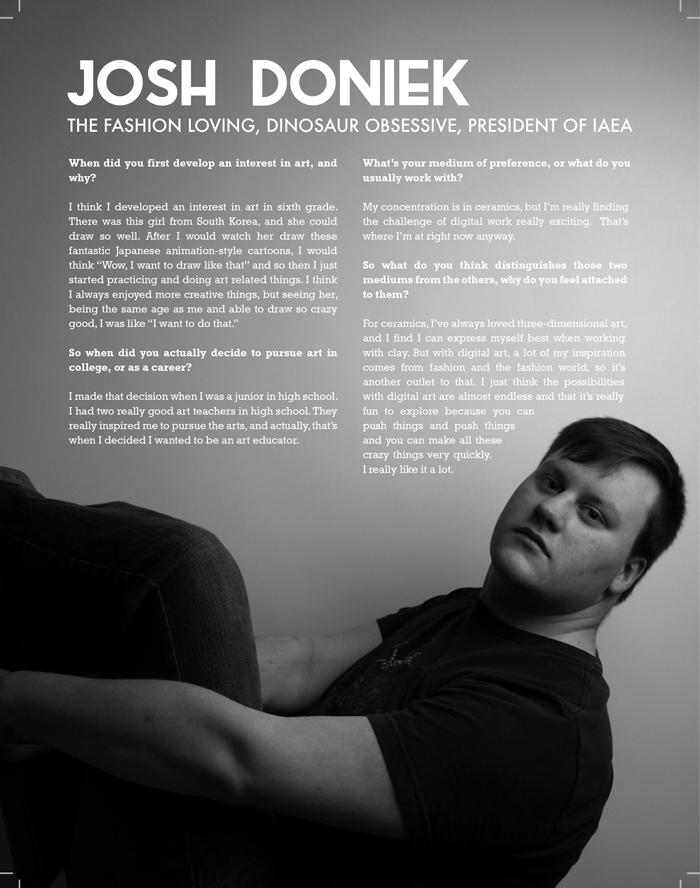
“However many copies were purchased, that’s the money we used to print,” explained Olson. “Whoever buys it ahead of time is who’ll have it. We sold 165 copies for our first run. That was really, really exciting because it was something nobody knew about and had never heard of. They could’ve gotten 10 pages; they just didn’t know if it was going to succeed. I’m really ecstatic for how it went the first time around.”
A major snag came when the pre-order money was stolen from the art department office prior to printing; Olson feared it would derail her project, but the department graciously replaced the missing cash as those who wrote checks gladly wrote new ones.
“A lot of faculty also donated their own money or grant money to help pay for it because they wanted to support us,” added Olson, who said interim chair David Griffin has been a particularly supportive figure within the department. “I didn’t know about that until recently, and it really meant a lot to know faculty were supporting us.”
To keep that from happening again, Office Administrator Sue Rardin has volunteered to work with EIU’s business office to set up an online ordering system for the Spring 2014 edition.
“I’m the department mom,” explained Rardin. “Anything they need, I’m here for them. Without the students, I wouldn’t be here.”
What’s in a Name?
If you’ve ever looked at the Doudna logo, you’ll notice each of the three departments are represented by a color: Music is red, theatre is green, and art is blue. You might also notice within the Doudna Fine Arts Center there is a “Red Room” located on the music wing and a “Green Room” in the theatre area.
“There’s no blue room, though,” Olson pointed out. “Since we wanted the magazine to be about the art department and a way for students to connect and spread their work to others, we thought we’d make our own blue room.”
Olson assures, however, that it’s all in good fun.
“We don’t mean it disrespectfully,” she said. “it’s just meant to be a joke … not an activist stand.”
Benefits of the Job
Aside from reading a manual and learning to operate the art department’s infrequently used (and initially daunting) binding machine to put together the magazine’s printed pages, Olson says the Blue Room experience has provided her a definite business sense.
“I didn’t realize I’d be doing so much business when I started this,” admitted Olson. “I was only thinking about wanting to design a magazine, but I learned a lot about management and delegating and working with a team.”
Everybody involved has the opportunity to do some things they might not get to do in a regular classroom setting.
“I have some art majors handling finances right now, and I have studio majors that are writing articles,” said Olson. Of course, there’s also the sense of satisfaction that comes with the finished product.
“You can say ‘I did that. I worked on that.’” said Olson. “On the other side of it where students are submitting work and participating that way, it’s just huge exposure … so much more exposure than just in the classroom.
“Especially for studio art, that’s what it’s all about: People seeing your work and liking it. The more people that see it, the more opportunities you get especially after you graduate. To say you were published in an art magazine is a really big deal.”
There’s also belief the department – and even the university – could reap some level of recruiting benefit from Blue Room’s existence.
“I think it’d be a really huge deal if Eastern ordered a bunch of copies and sent them out to high schools for art students to see,” said Olson.
“A lot of times, art students go to the city because they think that’s where you get the best education. But here you have so much one-on-one time with your professors, and all the professors here are artists themselves. We have so many opportunities here and every possible piece of equipment you could want.
“Some student could see that and realize this is the kind of work our students are producing, and that they could also be involved in producing this kind of magazine.”
What Does the Future Hold?
In the short term, the Blue Room team has made some tweaks and additions to the content and layout of the Spring 2014 edition. It will also be printed at The Big Picture this time around, while the cost will go to $10 from $8 in an attempt to ensure the project will avoid operating at the slight loss it experienced in its first printing.
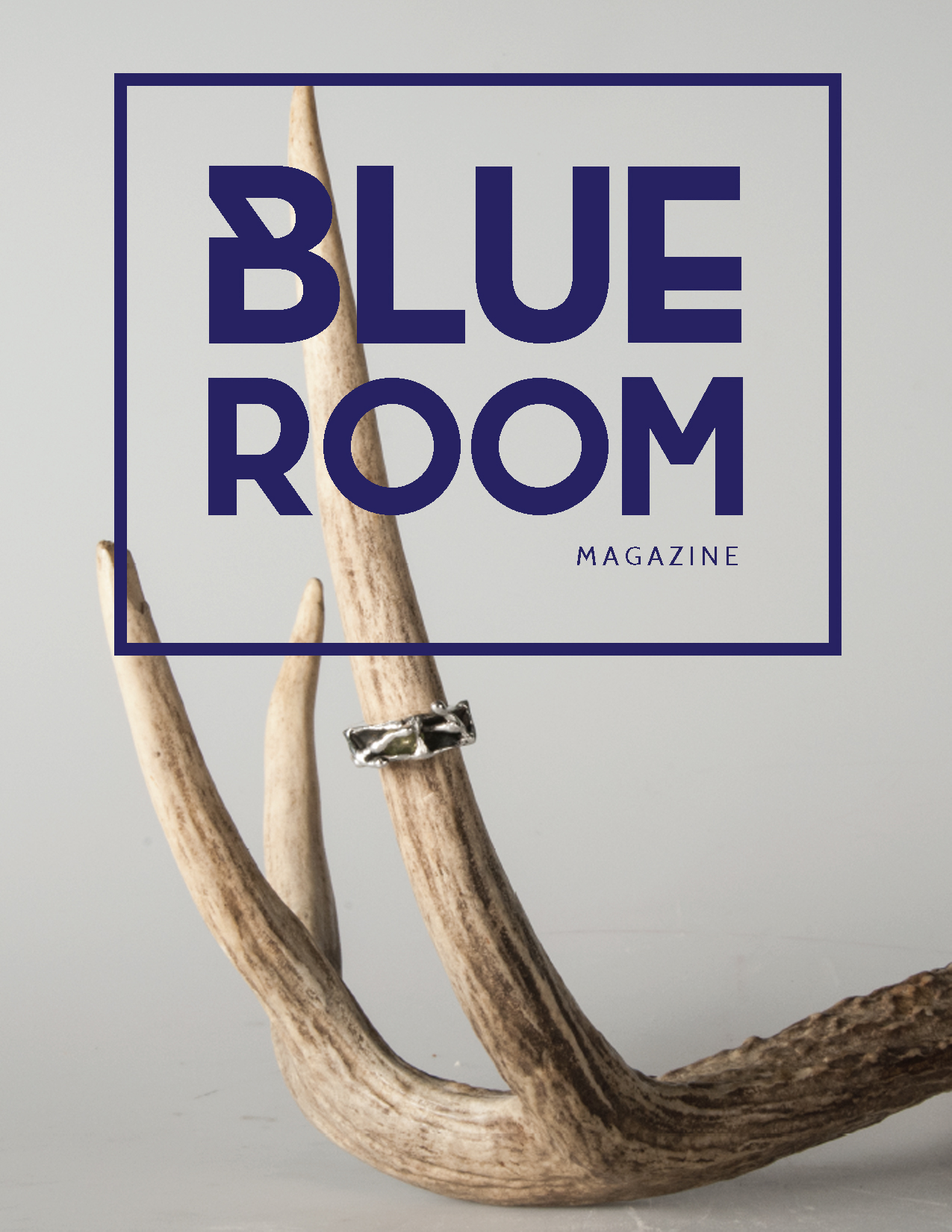 |
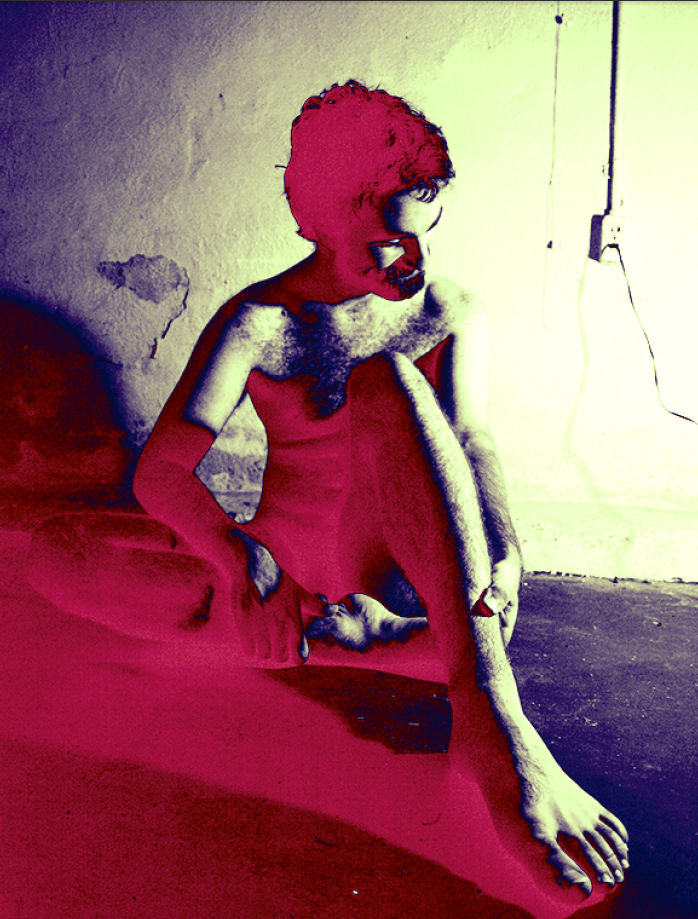 |
| The front and back covers of the Spring 2014 edition of Blue Room. |
In the long term, Olson hopes to see that price come back down. More importantly, though, she has her eye on what happens after she graduates in a little over a year.
“The goal is to find the right process that can become a pattern,” explained Olson. “It’s taking a lot more work right now because we’re trying to figure out the best way to do it. Once we get that figured out and if this semester goes really smoothly, then we’ll try and replicate that next fall.”
Then there’s the matter of scouting the magazine’s next editor in chief.
“The person needs to care enough to stick it out,” stressed Olson. “Ideally, a sophomore next year would get involved in the fall and see how it works. In the spring, once we have everything really figured out, I could start passing things on and training and working with that person so they feel really comfortable with it once I’m gone. Then it would become a self-sustaining thing; I want it to stick around and last.”
Olson doesn’t know exactly what her post-graduation future holds; while she plans to be accessible and willing to answer questions for future Blue Room teams, she hopes to have a process in place that can continue long after she’s gone.
“I want it to be established enough that people will want it around and be willing to work to keep it around,” said Olson. “If it’s still going in 10 years, that would be huge. I can’t even say how much that would mean to me.”




